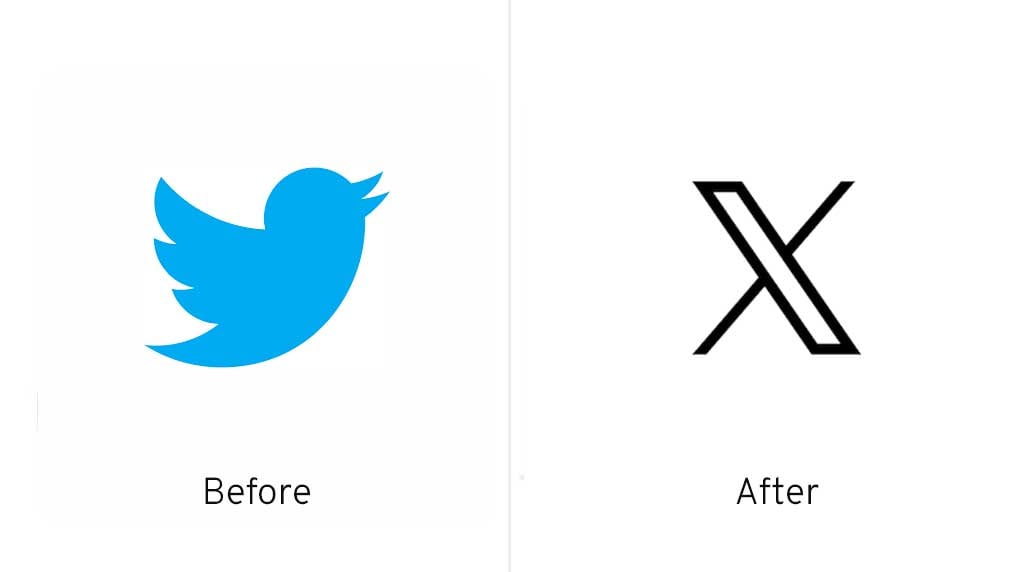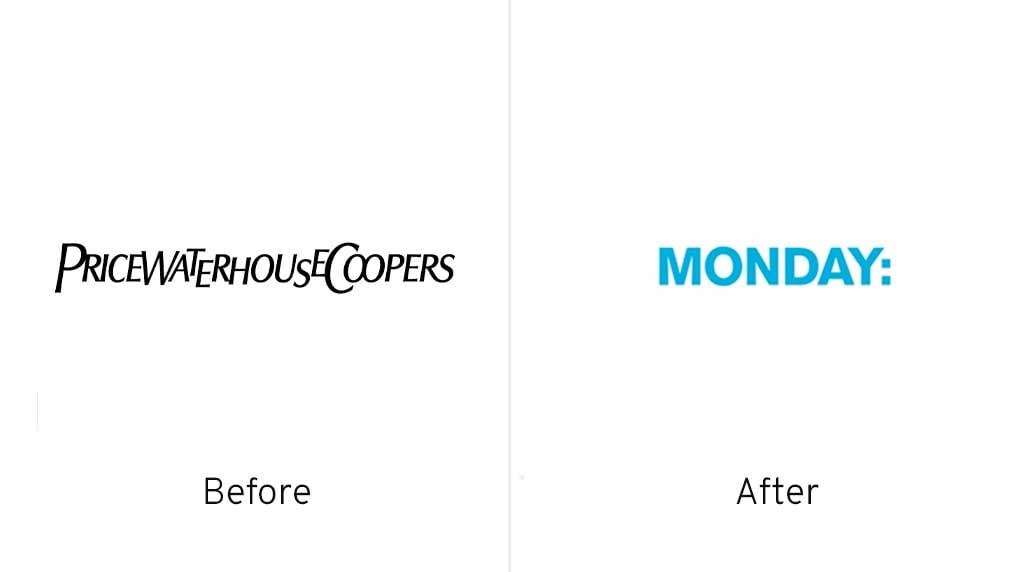
In today's fiercely competitive marketplace, simply offering top-tier products and services alongside a cool logo isn't enough to guarantee success. Without a robust, up-to-date branding strategy, your company's voice risks being drowned out. Strategic branding acts as your company's silent ambassador, distinguishing you from competitors and building an identity that resonates deeply with consumers.
This guide is not just a tool for navigating the lengthy and intricate process of strategic branding; it's a guide for the heart and soul of your business, a blueprint that encompasses the essence of your brand's future. Here, we will go over the following:
Your brand is the narrative that connects consumers to your business, evoking emotions and shaping perceptions. It's the indefinable essence that compels loyalty, sparks interest, and sets you apart from the endless hum of competition. So it's not just about creating an image; it's about engineering an unforgettable experience from start to finish.

The branding strategy you create will determine how customers think, feel, and respond to your company. With trust being the currency of choice, a staggering 81% of customers gravitate towards brands they believe in. This highlights the magnetic pull of a brand that’s strategically positioned to promise reliability and excellence.
For the seasoned marketer, building a brand strategy is akin to building an architectural wonder—every line, shape, and story you infuse serves a purpose, crafting an identity that stands resilient amidst consumer indifference.
Here are ways in which excellent branding influences your customer perception and business success:
The first impression speaks volumes. While it is not always good to judge a book by its cover, the reality is we always do, and businesses are not an exception. Research by psychologists suggests that it takes merely a tenth of a second for someone to form an impression. That's how quickly your target audience will judge your business. So, making the right impression through branding is crucial to your business' success.
Branding is the strategic art of aligning your business's outward image with its core goals, visions, products, and services in a manner that reflects professionalism and deeply resonates with your target audience. We at Major Tom see it as selecting the perfect outfit for your business—one that fits well and feels authentic. This outfit not only makes your business look good but also attracts people who resonate with it.
In short, branding is a visual strategy for classifying your business in the highly competitive marketplace. Your company will be easily recognizable and attract more traffic, which translates into a higher return on investment.
In a sea of competition, your brand's ability to stand out is crucial. A popular strategy to achieve this is through product differentiation. It involves carving out a unique space for your product or service, setting it apart from the rest, and amplifying your brand's influence in the marketplace.

There are popular brands across the globe that thrive through product differentiation. For example, we have the iconic Apple iPhone. Apple doesn't just sell a phone; it sells an experience, a slice of innovation wrapped in sleek design. This commitment to pushing the envelope in user experience and technology cements Apple's status as a leader, not a follower, in the tech world.
The success of your brand lies in its emotional connection with your audience and its ability to powerfully communicate its brand story. A brand that positively resonates on an emotional level—whether through empathy, inspiration, nostalgia, or joy—forges a strong bond with its customers. By tapping into these emotions, you can cultivate a deep connection that mirrors your customers' aspirations, desires, and values. This strategic approach lifts your brand above mere product functionality, earning a loyal spot in the consumer's heart.
For example, there's the classic cola battle between PepsiCo and Coca-Cola. Both giants serve up the same carbonated drinks, yet they stand worlds apart in the hearts of consumers. Coca-Cola wraps itself in the warm, nostalgic embrace of tradition and emotional connection. Pepsi, on the other hand, lays emphasis on energy and youth. The essence of product differentiation lies in developing a brand personality so compelling that your product becomes the go-to choice, the name on everyone's lips.
Great branding reflects transparency and honest communication, which helps build trust. It ensures that potential customers feel recognized and valued, which is critical for fostering long-term relationships. Remarkably, 71% of customers actively advocate for brands with which they feel an emotional connection, underscoring the substantial impact of such endorsements.
It's clear that emotional connection transcends being a mere advantage—it's a fundamental component of a brand's success in the competitive landscape. Brands that master these emotional connections are the ones that not only stand out but also achieve enduring growth.
With today’s consumer having so many options available, it makes it a challenge for companies to stand out and justify their prices. However, with the right branding strategy in place, your products and services can be elevated, allowing you to command premium prices.
Effective branding merges loyalty, awareness, and perceived quality, convincing consumers that paying a bit more is worth it for a brand they trust and view as superior. When your brand's narrative communicates quality and reliability, consumers are more inclined to invest in your products, seeing the extra cost as an investment in value, not just an expense.
An impactful brand weaves together various components, each serving a distinct purpose in connecting with the audience and distinguishing itself in the marketplace. Here are the core components that form the backbone of any successful branding strategy:
Today's consumers gravitate towards brands with a clear purpose. Articulating why your business exists and how that matters to your audience not only sets you apart but also drives growth and enhances your return on investment. A brand's purpose is its compass, guiding every business decision and customer interaction.
You must clearly know where you want your company to be in the future. A clear, achievable vision is essential for steering your company towards long-term success. It influences every aspect of business decision-making, ensuring that every step aligns with where you want your company to be. Crafting a compelling vision is about more than just setting goals; it's about defining the legacy you want to leave.

Every company should have core values. Your company's core values are the principles that dictate how you engage with the world and what you stand for. These values attract consumers and potential employees who share similar beliefs, fostering a community around your brand. More than just words, your values are reflected in every aspect of your business, from decision-making to daily operations, ensuring consistency and authenticity across your branding efforts.
The personality of your brand is what breathes life into your interactions with your target audience. It's about creating a relatable character that consumers can connect with on an emotional level, transforming customers into loyal advocates. A well-defined brand personality makes your business approachable and memorable.
In the relentless competition of today's market, standing out requires a deep understanding of your competitors. By conducting a thorough competitive analysis, you will identify your strengths and weaknesses. Plus, it will uncover industry gaps and highlight opportunities to innovate and excel. This strategic insight allows you to position your brand effectively, ensuring it resonates with your target audience.
Now that you know the core components, you’ll have a better understanding of the telltale signs of a failing brand strategy (and how to solve them).
Digital branding is more than just an online presence; it's about creating meaningful connections with your audience in the digital world. Here's how to seamlessly incorporate digital strategies into your branding:
Most customers are on the lookout for companies that provide solutions to their problems. So, to truly resonate with your target audience, you need to understand their needs and challenges. Utilize tools like buyer personas and customer journey maps to gain insights into your audience's behaviors and preferences. This understanding allows you to tailor your digital content and interactions to meet their needs effectively. You can find tips on customer research further down.
In the digital realm, content is king. Yet, in this realm where users scroll through masses of media daily, not just any content will do. High-quality, engaging content is what will capture your audience’s attention and leave a lasting impression. Invest in creating informative and visually appealing content that stands out, helping to establish your brand as a thought leader in your industry. A solid content marketing strategy will help ensure success with this.

SEO is a powerful tool for enhancing brand visibility and awareness online. A strong SEO strategy ensures your brand ranks highly in search engine results, improving engagement and driving valuable traffic to your site. By focusing on SEO, you attract visitors who are genuinely interested in what you offer, boosting the effectiveness of your digital branding efforts.
Social media platforms are invaluable for building and nurturing your brand. With 5.04 billion users worldwide, social media offers a vast audience for your brand to engage with. It’s crucial to maintain an active presence by consistently sharing valuable content, which will enhance brand awareness, drive engagement, and foster a loyal community around your brand.
Read: Mastering Digital Branding: Integrating Digital Growth and Management into Your Brand Strategy
A robust branding strategy is crucial for defining your market position. Enhancing your strategic development process is essential for this, involving deep dives into understanding your target audience and meticulously planning your brand's trajectory. Here's how to refine your strategic branding development:
Businesses that invest in understanding their prospective customers’ needs often see exponential growth. Regular research helps align your services with their expectations, significantly reducing brand development risks. Here are tips to help you understand your audience:
At Major Tom, we know the importance of deeply understanding a company's goals, values, and mission. Engaging customers throughout the strategic process ensures the creation of a brand strategy that resonates with your business objectives. This involves a structured approach:
The journey begins with gathering essential internal and external information for optimal brand positioning. Involving stakeholders early on helps pinpoint areas needing improvement and aligns everyone quickly. Auditing existing brand materials provides clarity on what elements are working and which aren't, laying the groundwork for strategic development.
Identifying and defining your brand's unique position in the market is crucial. This stage involves mapping out brand concepts based on the insights gained in the Explore stage. Plenty of ideation will take place here until the best strategy is fully developed.
This is where your brand's visual and verbal identity is crafted, reflecting your unique value proposition. This will all be documented in your new brand book, which will now be the guidepost for all new marketing material and strategies.
Consistent brand management ensures your brand remains relevant and resonant with your target audience. Ongoing market analysis helps gauge the impact of new competitors and shifts in consumer preferences, allowing for strategic adjustments.
For those in the B2B space, check out “Crafting a winning B2B branding strategy: insider tips and techniques”.
In the quest for branding excellence, having the right set of templates and checklists at your disposal can significantly streamline the process, ensuring coherence, consistency, and a deep connection with your target audience. From understanding the competitive landscape to maintaining brand integrity and fostering customer empathy, these resources are invaluable. Here are a couple of resources we have at hand to help pave the way for your brand’s success:
Brand guidelines play an important role in creating and managing a brand strategy. It outlines the rules, requirements, brand standards, and how to handle business branding elements. Whether running a big or small business, you need dedicated guidelines to uphold consistent branding. The guidelines should include your:
Creating a semi-fictional representation of your ideal customer based on real data and research helps tailor your marketing strategies to meet or exceed their expectations. Using a brand persona template allows you to better understand your prospective customers' behaviors, needs, and preferences. Gaining empathy and understanding from this exercise enables you to craft more effective and personalized marketing efforts.
The journey of your brand strategy into the marketplace starts within the walls of your own organization. Ensuring your team is fully aligned with the brand's mission and vision is crucial. Therefore, an internal launch should be rolled out where everyone is fully informed about the new brand and the brand guidelines. They should have access to the brand book and relevant resources they need.
Feel free to make this fun by engaging them with training sessions, interactive videos, and branded merchandise to foster a sense of belonging and excitement towards the new brand. Empowering your team as brand ambassadors is essential; they are your brand's first and most influential advocates.
The moment of unveiling your brand strategy to the public is pivotal. To ensure a seamless transition, your digital presence, especially your website, should be primed for the new brand introduction. Updating communication channels and assets in a timely manner is key to maintaining consistency and clarity during the rollout. If you have existing clients, make sure a robust communication plan is in place so there’s no confusion.
Ensuring your brand's messaging resonates with your target audience is key. A cohesive narrative not only captivates but also retains customer interest. Establishing communication guidelines to be followed both externally and internally guarantees that all messaging reinforces your brand identity, avoiding confusion and strengthening your brand's market position.

Merging your brand with your company culture is pivotal for authenticity. A harmonious blend ensures every team member embodies the brand values in their actions and communications, turning your workforce into genuine brand champions. This unity amplifies your brand's voice, making its presence felt both inside and outside the organization and solidifying your identity in the competitive landscape. This can be supported by offering volunteering initiatives for causes aligning with the brand and considering the new brand values within the hiring process.
Read Best practices for implementing a brand book or guide for more details.
Staying relevant in a dynamic market means your brand must evolve. Minor updates or a partial rebrand can refresh your brand's image without the need for a complete overhaul and a high price tag. (Discover the differences between rebranding services vs brand refresh services here.)
Practical ways to evolve your brand can include:

Understanding the difference between brand metrics and KPIs is important. While brand metrics provide insights into your brand's health, KPIs are specific measures used to track the progress of crucial branding goals and objectives. Therefore, your business goals determine whether a metric will be considered as a KPI.
Here, we've provided you with brand health metrics you can implement to evaluate your brand's strategy effectiveness:
At its essence, brand awareness encapsulates how well your audience recognizes and understands the unique qualities of your brand. It's the measure of your brand's footprint in the minds of your target market—the first crucial step on the path from curiosity to loyalty. Achieving high brand awareness is an investment in your brand's visibility and influence, laying the groundwork for sustained growth and market leadership.
This is where the magic happens—where your customers and your brand truly interact. From the digital realm of eCommerce and websites to the human touch of sales teams and customer support, every point of contact is an opportunity to deepen engagement. High engagement signals a vibrant, active relationship between your brand and its audience, paving the way for increased sales, unwavering loyalty, and, you guessed it, even greater brand awareness.
Ever wondered what emotions your brand stirs in the hearts of your audience? Enter brand sentiment. This metric gives you the pulse on how your brand is perceived, emotionally speaking. It's about understanding whether your audience's feelings towards your brand are highly positive or veering towards indifference. Evaluating brand sentiment places awareness and engagement in a broader emotional context, offering insights into the hearts and minds of your consumers.
Other critical metrics include:
Each metric offers a piece of the puzzle in understanding your brand's impact and reach.
By adhering to these best practices and continuously monitoring key metrics, you can ensure your brand not only launches successfully but also thrives and evolves in alignment with market dynamics and consumer expectations.
When venturing into international markets, consider these strategies for global branding success:
Standardization Strategy: Aims for a uniform marketing approach and brand identity in the global market, assuming universal customer needs and preferences for consistency across borders.
Localization Strategy: Unlike standardization, this strategy tailors your brand and marketing efforts to fit local tastes, cultural nuances, and market conditions. It seeks to create a highly effective customized brand experience which could include altering packaging and product features to align with specific market demands.
Acquisition Strategy: This strategy fast-tracks global presence by acquiring established local brands and leveraging their market knowledge, customer base, and distribution networks.
Globalization Strategy: This strategy merges the principles of localization and standardization. The goal is to maintain core brand identity while adapting to local preferences and market demands.

Throughout our experience with diverse brands, we've seen a number of reasons why companies rebrand, including:
Rebranding, when executed thoughtfully, can rejuvenate your brand. Here is our four-step approach for a successful transformation. (You can find a more detailed checklist here.)
If needed:
Budgeting for rebranding or initiating a brand strategy is crucial for resource allocation. Costs vary widely based on the scope and depth of services:
At Major Tom, we tailor our services to meet your brand's unique needs, ensuring that every dollar invested contributes to achieving your strategic goals and enhancing your brand's value in the marketplace.
For more information, read The differing costs of Brand Strategy Services explained.

Energizer, tracing its origins to the 1890s, has proven that in the competitive battery industry, mere reliability isn't enough for lasting success. Their commitment to relevance and adaptation teaches a crucial lesson in sustaining brand longevity.
The Challenge: Known for reliable, long-lasting batteries, Energizer faced the challenge of differentiating itself in a crowded market to preserve its competitive edge.
The Reinvention: Energizer undertook a bold visual identity overhaul, introducing a vibrant color scheme that set its products apart on the shelves. This strategic shift from the traditional red, black, and copper color motifs of its competitors made Energizer's offerings instantly recognizable.
Moreover, the brand evolution embraced Mr. Energizer, the energetic pink rabbit mascot, elevating him from a minor packaging element to the centrepiece of Energizer's branding. This move refreshed the brand's image and deepened its connection with consumers, associating Energizer with enduring energy and innovation.
The Lesson: Energizer's narrative highlights the necessity for established brands to continuously innovate and engage with their audience. Through strategic differentiation and the iconic Mr. Energizer, the brand has emphasized its dedication to innovation and strengthened its market presence.

We have to say it: the rebrand from Twitter to X is a cautionary tale in brand evolution and the consequences of a poor rebrand rollout.
The Challenge: Twitter's rebrand to X, intended to signal a new direction, instead confused and alienated its user base. The abrupt change lacked clear communication about the reasons and benefits, creating a disconnect.
The Misstep: The transition diluted Twitter's strong brand equity, built on its iconic logo and the cultural staple of the "tweet." The new name 'X' added to the confusion due to its simplicity and commonality. Media outlets still feel compelled to clarify the platform's identity by adding “formerly known as Twitter,” indicating a struggle for the new name to stand alone and resonate with the public. Additionally, a poorly done brand rollout, including inconsistencies in updating branding elements, like the lingering old logo and "tweet button," led to user confusion.
The Lesson: This rebrand highlights the need for strategic planning, clear communication, and a deep understanding of a brand's role in its community. Successful rebranding involves more than using a new name or logo the CEO wants. It requires conveying a compelling future vision and respecting the brand's legacy and user loyalty. Something that Facebook’s rebrand to Meta was much more successful in. The story of X underscores the balance between innovation and tradition, reminding us that a brand's history and user loyalty are critical assets in the branding journey.

Slack, the go-to messaging app for businesses—including us here at Major Tom—decided to refresh its brand identity after six impactful years in the game.
The Challenge: Since its inception in 2013, Slack has revolutionized team communication but faced a branding dilemma. Its original logo, a colorful hashtag, struggled for uniqueness amidst the ubiquity of hashtags in social media. Additionally, its 11-color palette proved problematic, leading to distortion and inconsistency across various applications, diluting the brand's identity.
The Reinvention: Slack embarked on a rebranding effort aimed at achieving brand consistency and cohesion. The complex hashtag was replaced with a simpler, more distinctive mark featuring rounded lozenge shapes and speech bubbles, symbolizing communication. The palette was refined to four primary colors, paired with a clear, adaptable wordmark that stands out against both light and dark backgrounds, including Slack's iconic purple.
The Lesson: Slack's rebrand demonstrates the power of simplicity and clarity in a brand's visual identity. By streamlining its logo and color scheme, Slack resolved the visual challenges and reinforced its position as a leader in business communication. This strategic overhaul highlights the importance of adaptability and the need for a cohesive brand image that resonates clearly with its audience, ensuring the brand's essence remains intact while evolving its presentation.
Read the Oliver case study to get a taste of Major Tom’s own branding successes.

The transition of PricewaterhouseCoopers' consulting division to 'Monday' serves as a pivotal lesson in the complexities of rebranding a well-established brand identity.
The Challenge: The move to rebrand its consulting arm to Monday was PwC's bid to signal a fresh, innovative direction. However, this shift ended up bewildering and distancing their established clientele. The rebrand lacked effective communication about its rationale and advantages, leading to a significant disconnect with the audience.
The Misstep: The transition to Monday diluted PwC's strong brand equity, which was built on decades of professional service and reliability. The name failed to convey the company's expertise and value proposition. Moreover, the rebranding did not consider the firm's long-standing tradition and loyal customer base, leading to a loss of brand recognition. The generic nature of "Monday" further complicated online searchability, making it challenging for clients to connect with the brand. Needless to say, the consultancy no longer operates under the name and millions of dollars were wasted.
The Lesson: PwC's venture into rebranding to Monday highlights the critical importance of weighing up all elements of an existing brand and its new direction. Although PwC Consulting wanted to distance itself from its parent company, it went too far and became totally unassociated with the valuable brand reputation and legacy it had taken decades to build.
For more B2B examples, dive into B2B rebranding success stories: Lessons and strategies.
It's clear that branding isn’t about abstract ideals or superficial imagery. A deliberate and well-executed brand strategy is foundational to your business's success. It provides clarity on your brand's direction and purpose, which is essential for making a mark in your industry. Neglecting your brand strategy and failing to see the signs it’s starting to struggle can leave your business adrift in a competitive market. Recognizing and addressing these signs early ensures your brand remains relevant, resonant, and ready to meet the evolving needs of your audience.

When it comes to branding, partnering with an agency is beneficial in the following ways:
At Major Tom, we thrive on creating brands that truly resonate with their audience, crafting narratives that engage and leave a lasting impression. Our expertise doesn't end with our brand strategy service; our in-house marketing and web experts can step in to ensure that everything flows seamlessly from the initial branding phase to web project execution and brand launch campaigns.

We value honesty and transparency above all in a partnership. Rather than just saying and agreeing to whatever might win us business, we focus on building partnerships with those we believe we can achieve the greatest success with. With over two decades of experience, we've learned, evolved, and consistently deliver work that exceeds our clients’ expectations.
If you think we’d be a great fit and you have a project you’d like to get off the ground, reach out and let’s chat.
The more I learn, the less I know, and the more I want to learn.
Receive exclusive action-focused content and the latest marketing insights.